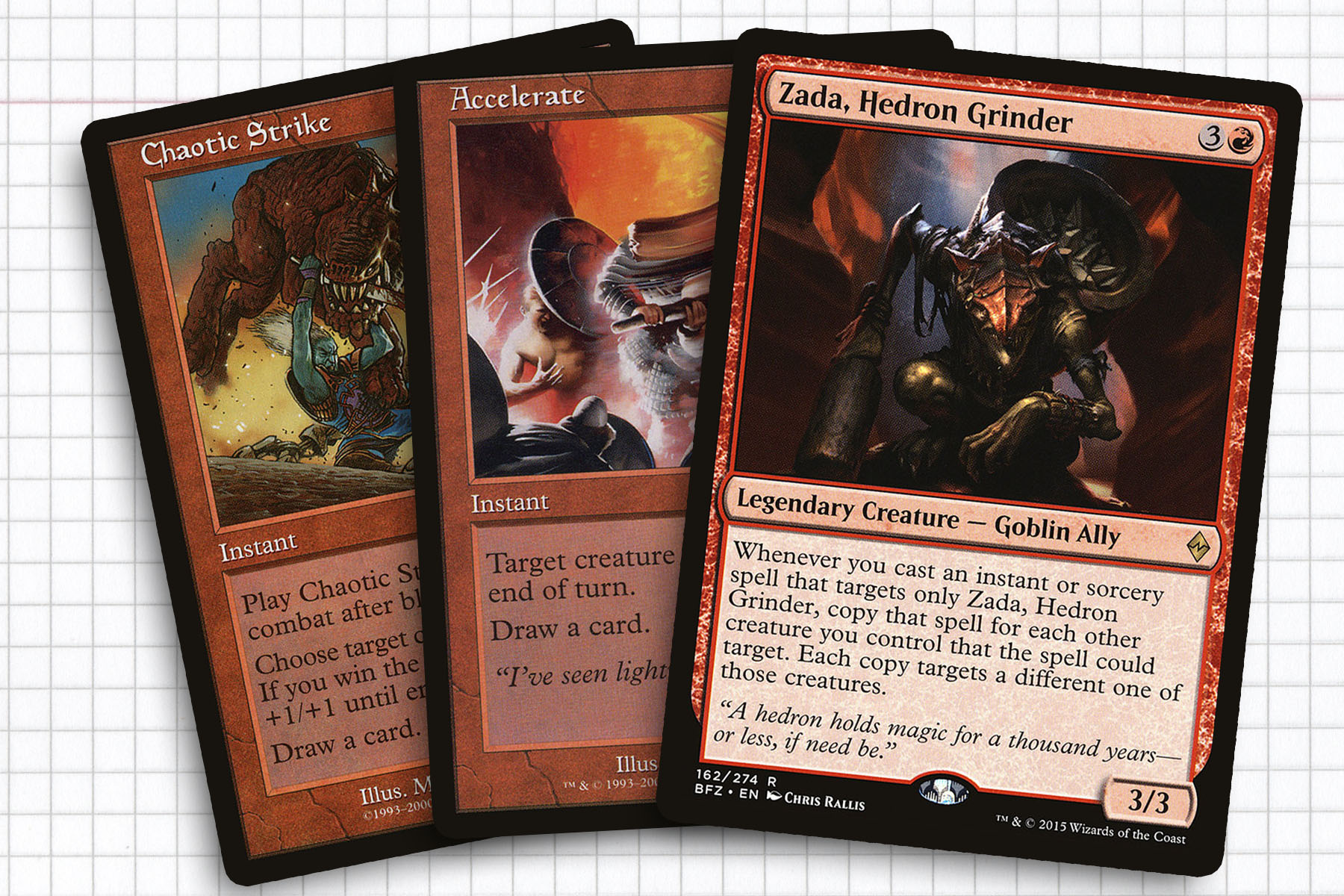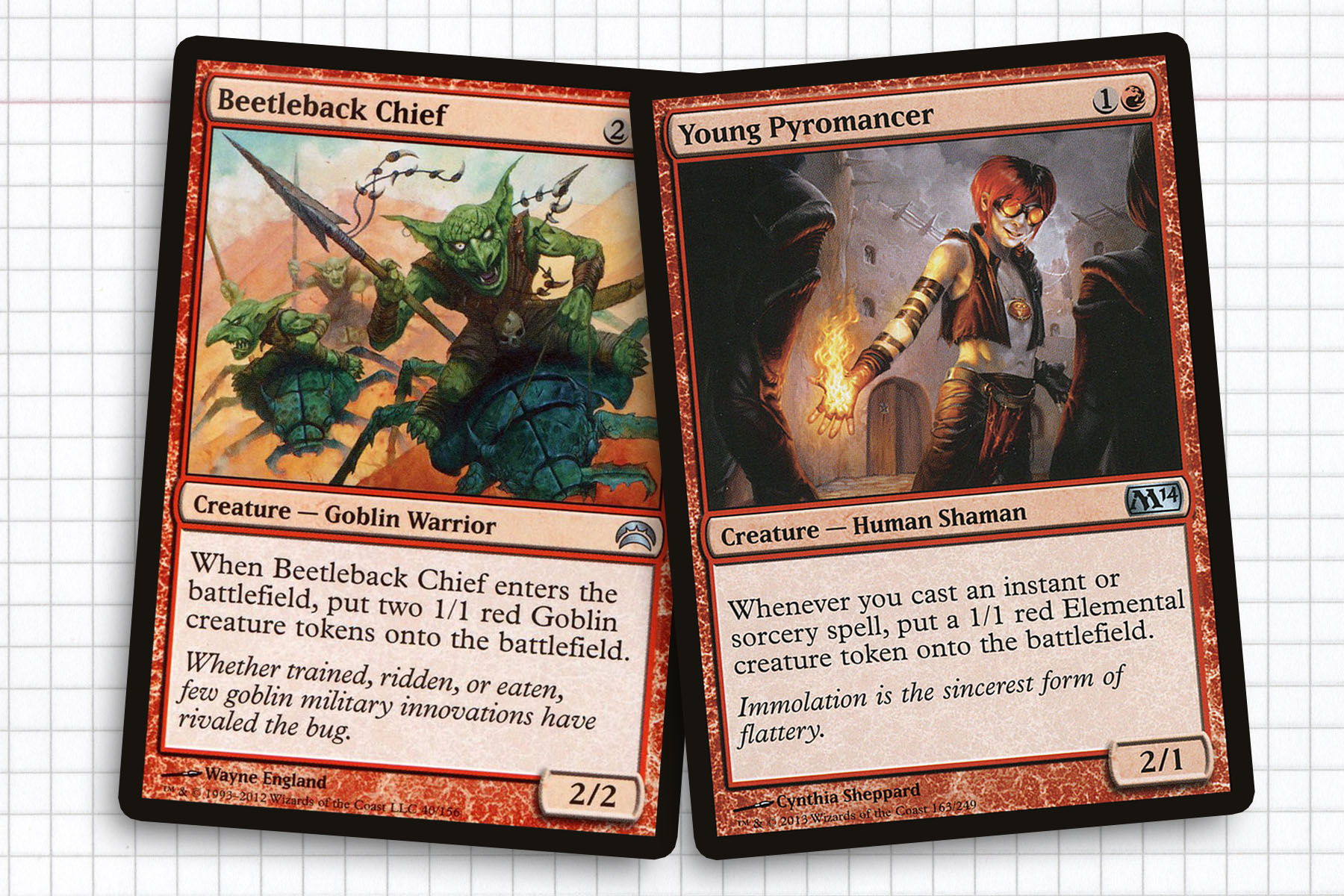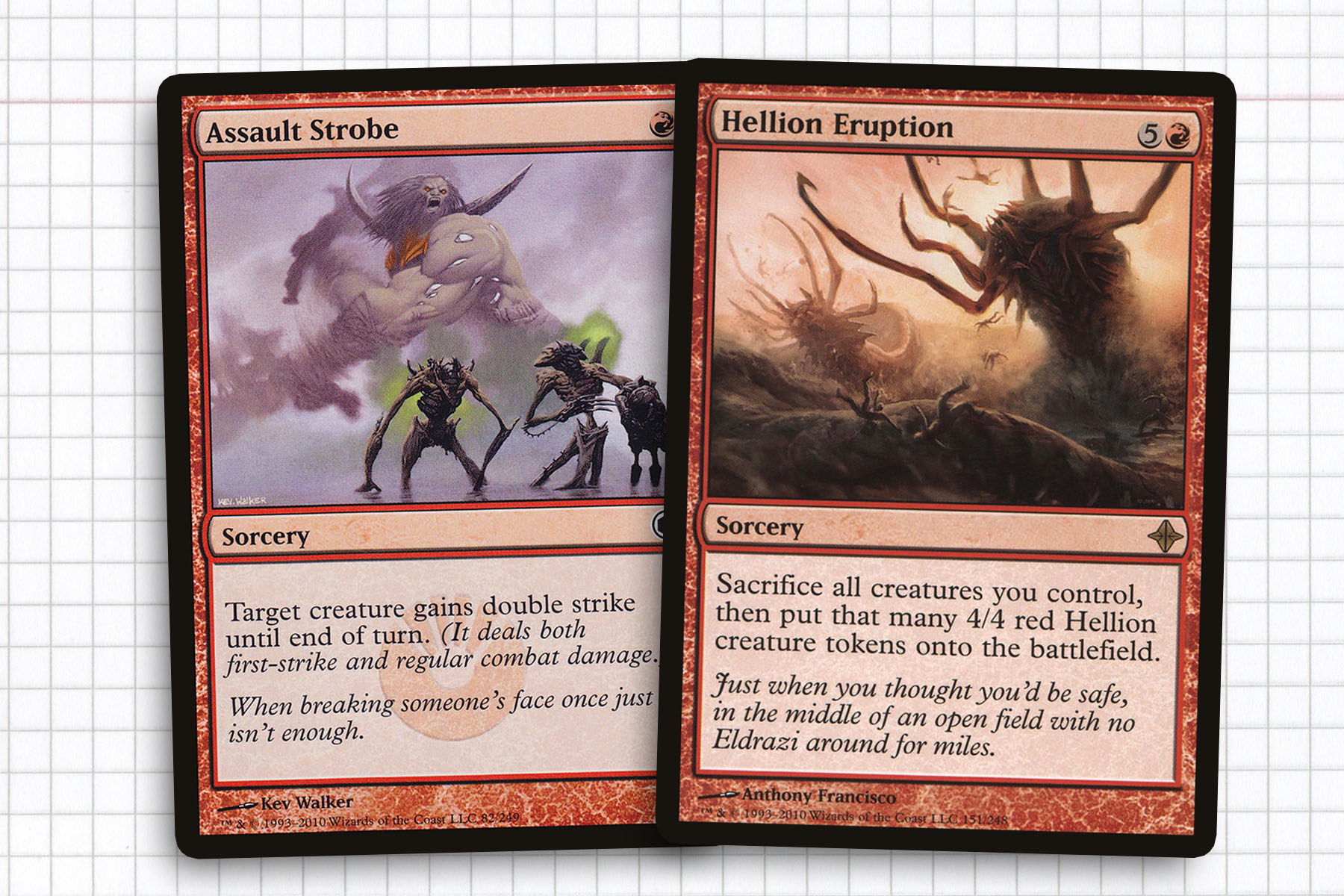This is a second installment of a series meant to recapture some of the themes I wrote about two years ago, spending December and our third visit to Ravnica as inspiration to build a deck around legendary creatures coming from each of the three blocks. An unintended consequence was that as I wrote about Niv-Mizzet, Teysa, and Izoni; I found myself theming each deck around where my life was at the time of each block.
Our return to Zendikar creates the perfect opportunity to repeat the series all over again. An added layer this time around is that I’ve chosen to confine myself to the cards that would have been available at the time the block in question was printed. Last week I didn’t consider a card beyond Rise of the Eldrazi, and this week being restricted to the status quo of Oath of the Gatewatch.
Looking at each of our visits to Zendikar as checkpoints, our second visit came just as I was getting married. No longer was I in a relationship where Magic was looked at as a waste of my time; now my partner saw the game as my method of expression and actively supported my hobby. Because of this, I own an ungodly amount of Battle for Zendikar cards, brought on by my excitement for the eldrazi and being in a period of my life where buying multiple boxes of booster packs for the purpose of drafting was an attainable goal. With that said, I have a soft spot for this period of Magic, and my only regret is that I will likely never see a return on investment for my fifth or sixth copies of unused rares and mythics.
This week, we have one ally, Zada, Hedron Grinder, who—like my partner and I—aims to make the team they surround themselves with greater than the sum of its parts. Honestly, even though it has always been on my shortlist of decks to at least try building, part of what prevented me was the feeling that I would have nothing new to add and that it might not be a deck that matched my sensibilities. After theory-crafting, I think I can respect the pillars of of the archetype—cantrips, tokens, and anthem effects—and still find room for my own predilections.
Commander: Zada, Hedron Grinder
Creatures: Beetleback Chief, Chancellor of the Forge, Dragon-Style Twins, Embermaw Hellion, Emrakul’s Hatcher, Ghirapur Gearcrafter, Instigator Gang, Kiln Fiend, Legion Loyalist, Manic Vandal, Myr Battlesphere, Ornithopter, Phyrexian Walker, Rapacious One, Scourge of the Throne, Siege-Gang Commander, Thopter Engineer, Treasonous Ogre, Young Pyromancer
Artifacts: Fire Diamond, Guardian Idol, Helm of Awakening, Mind Stone, Ruby Medallion, Thought Vessel
Enchantments: Bedlam, Berserkers’ Onslaught, Dictate of the Twin Gods, Impact Tremors, Outpost Siege
Instants: Accelerate, Balduvian Rage, Battle Hymn, Boiling Blood, Chaotic Strike, Crimson Wisps, Desperate Ritual, Dragonrage, Expedite, Fall of the Hammer, Overblaze, Pyretic Ritual, Reverberate, Rouse the Mob, Rush of Blood, Seething Song, Soul’s Fire, Stun, Temur Battle Rage, Uncanny Speed, Zap
Sorceries: Assault Strobe, Descent of the Dragons, Empty the Warrens, Fury of the Horde, Heat Shimmer, Hellion Eruption, Hordeling Outburst, Seize the Day, Twinflame, World at War
Lands: 29 Mountain, Blinkmoth Nexus, Forgotten Cave, Kher Keep, Mishra’s Factory, Mutavault, Myriad Landscape, Nykthos, Shrine to Nyx, Smoldering Crater, Valakut, the Molten Pinnacle

Cantrips are Key
A key characteristic of the deck that I was originally considering fighting against was the overabundance of cantrip spells. The basic idea being that with Zada in play, a pilot wants spells that include the text “draw a card” like Accelerate, Chaotic Strike, and Expedite. This pumps up all of our creatures up in mass, while also drawing an excessive amount of cards. But this felt to me too much like a storm deck—something I don’t have the mental fortitude to keep track of in my current unfocused quarantine state.
After some reflection, I realized how wrong I was. One of my blindspots is be a lack of card draw; so as a change of pace for me, this deck gives me a taste of card advantage I don’t normally get to experience. Additionally, because of the excessive amount of card draw and fear of decking ourselves, this deck is not looking to play long games. The more I thought back on the other pilots I’ve seen use Zada and then considered this build, the more I’ve come to consider Zada the last piece of a puzzle that can be solved any number of ways. While this deck no doubt could spiral into an overload of information as our hand begins to become double digits, that also sounds incredibly fun.

Some Assembly Required
As stated, this deck wants to step in and end the game as quickly as possible. Because of that, we want to seed the deck with creatures that create more bodies in a timely fashion. This can start inconspicuously with Ghirapur Gearcrafter and Thopter Engineer, but I have also chosen to up the curve to include cards like Emrakul’s Hatcher, Myr Battlesphere, and Rapacious One. This is built off the idea that we can aim to build momentum, casting these larger spells, and create a fireworks show on turn eight or nine as we make our effort to decisively win.
In a similar sense, Young Pyromancer can play an important role in this deck as well. Prowess seemed like a powerful keyword and it does make an appearance on Dragon-Style Twins; but with the Pyromancer, we can build an army instead of a soldier. For more tokens, we have a small subtheme of goblin tribal through Beetleback Chief, Empty the Warrens, and Siege-Gang Commander. The intent here is that after our alpha strike, we may be able to string together the mana to finish off a player, possibly with an assist by Treasonous Ogre.

Going to the Endgame
The above small synergies are in the deck to set the stage for the big payoff, in the form of additional attack steps through Fury of the Horde, Scourge of the Throne, and Seize the Day. But to back up these attack steps we will be using cards like Berserkers’ Onslaught, Dictate of the Twin Gods, and Wildblood Pack—I know, it looks counter-intuitive—to deliver a lot of damage. This ties our win condition to my preferred method of victory: combat.
Spells that grant double strike really come at a premium, especially with the deck building restrictions. But the ability is so valuable that any cards granting double strike are auto-includes. That’s why we take advantage of the fact that our creatures will likely be regularly massive and use Assault Strobe or Temur Battle Rage to speed up our clock. An innovation I brought to this deck is what I’m considering the Warp Worlds of the archtype, Descent of the Dragons and Hellion Eruption, which will take advantage of the token strategy we’ve cultivated to upgrade our creatures and use Impact Tremors or Outpost Siege to also get some damage in.
In the end, I think this deck is something that I would really enjoy as a break from the more timing intensive or purely tribal decks I normally gravitate towards. Spellslinger decks have never been something I have gotten a lot of traction out of in any format. But I think Zada’s dependence on combat to dictate the flow of the game—Overblaze and Soul’s Fire could be a very good one-two punch—allows it to be a deck that wins on my terms.
This adventure back to late 2015 and early 2016 has been a nice escape from the looming power creep of the next few years. While there is certainly a lot to like about blocks such as Shadows over Innistrad and Kaladesh, it’s bizarre to think about how much the game has changed in what feels like such a short amount of time. I’m excited to finish this series off next time and move from the honeymoon period of my life and into parenthood. Hopefully, I can find something thematic of that to build. Thanks for reading.
Ryan Sainio is a Graphic Designer who writes about EDH and the EDH community. He has been playing Magic: the Gathering since 7th Edition in 2002 and values flavorful and fun gameplay over competitively optimized decks.

